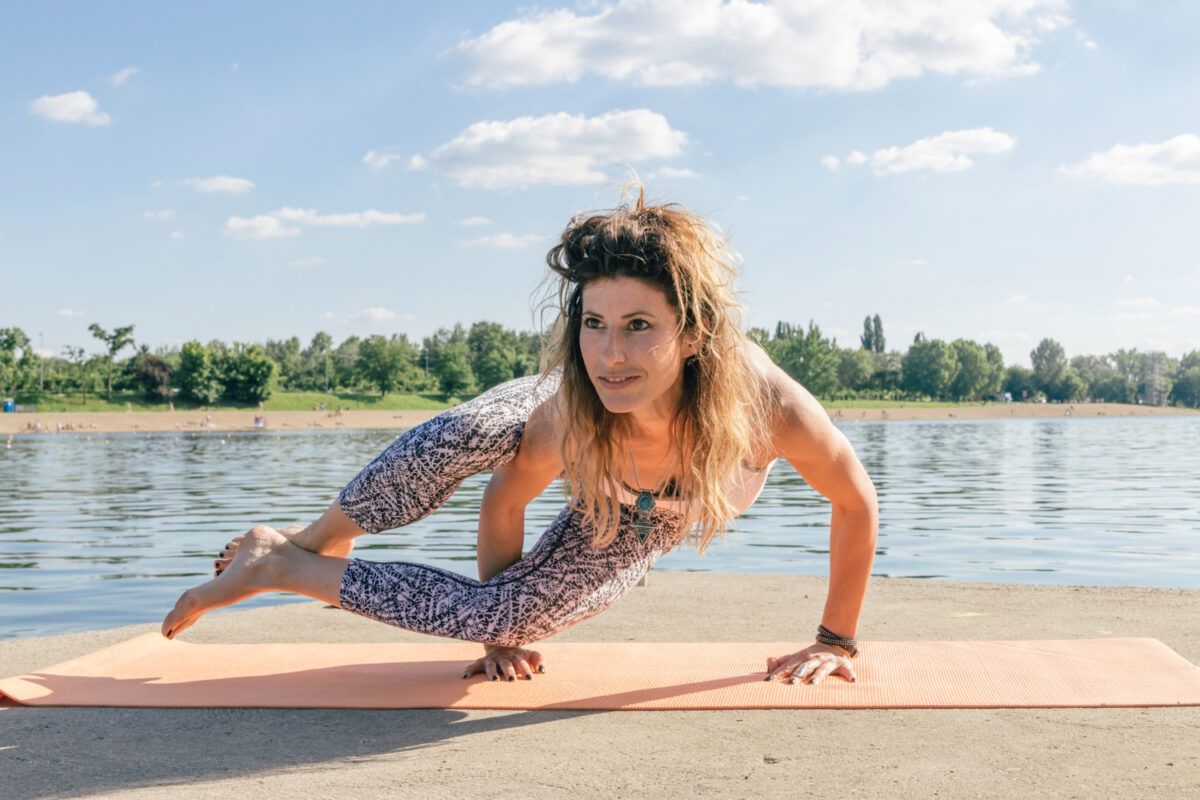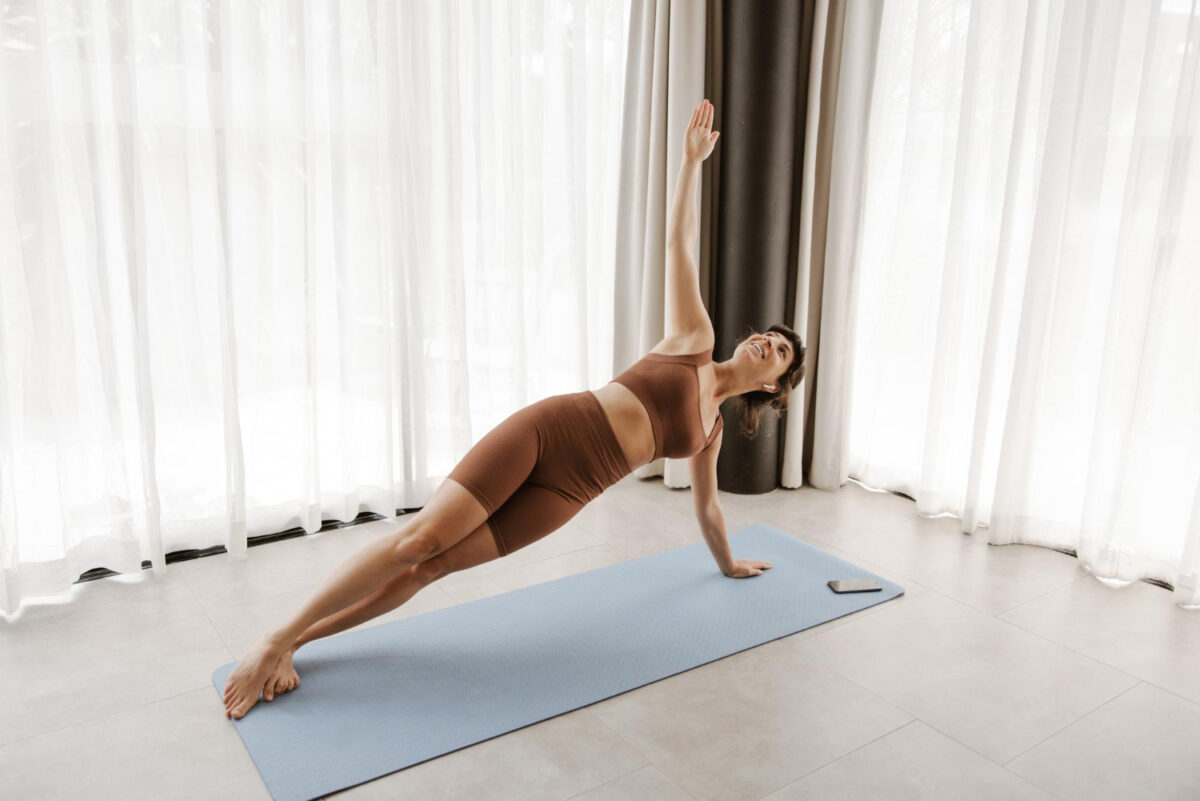In the West we have become experts in the practice of yoga, if not in the physical practice of yoga postures. So much so that we sometimes forget to start with the basics, how to practice yoga
Yoga is not a sport, nor a simple physical activity. Although some postures require "knowledge" or technique to perform safely, this is not an athletic competition, nor a quest for perfection of postures. Nor, although its therapeutic benefits are many, is it a treatment or therapy. Yoga is an inner work that requires our involvement. As my teacher reminded us, yoga begins when therapy ends.
So, in front of a yoga class, where do we start?
How to practice yoga?
- The attitude
- attention or attentive observation
- The sthira sukha
- The breathing
These four approaches are what will bring us closer to the practice of yoga. The one that starts on the mat and continues when you leave the class. We will continue to apply, attitude, breathing, sthira shukacare throughout the day. To integrate in a slow, serene way, the changes and benefits that appear during the practice.
Attitude
When practicing yoga we work both the physical body, the breath, the emotional body as well as the mind. They unite, they merge. But for this to happen, a correct attitude towards practice is important. If we face the practice of yoga as a challenge of self-improvement, we run the risk of falling into the feedback of our ego. If we do not trust ourselves or the teacher, the practice will be empty and we can even harm ourselves. Yoga gives us this opportunity to observe our patterns and tendencies, whether physical, emotional or mental, but for these to emerge our attitude must be open, respectful and humble.
Practice begins with our attitude, with yama Y niyama, the philosophical principles of yoga that give us recommendations about our relationship with others and with ourselves (do not harm, do not lie, detachment, etc.).
gestures and attitudes
We can help ourselves with small symbolic gestures that will bring us closer to this attitude towards ourselves and towards others. An attitude towards inner discovery.

- Leave your shoes at the entrance of the yoga center or classroom. Never practice with shoes. This is a gesture of modesty, detachment. You leave behind your day to day, to start barefoot, connected and more present your practice. Something of you stays at the door, your masks, your armor, so you can practice from what you really are, without makeup, or frills.
- respect to your companions, their space. In a shared practice you are not alone, you merge with your colleagues to be part of something else.
- Practice without expectations. open up to what may happen during practice. It will not depend on the teacher, nor on the room, nor on the quality of your mat, but on you.
- Follow the swing of your breathing, this will mark your practice. Do not force or imitate others. Instead, practice according to your state at all times, respecting yourself and stopping when you need to.
- watch yourself without judging you We are often our own harshest critic. If we observe a tendency, a pattern in our practice, in our attitude, we do not have to want to suppress it, nor do we have to justify it. Understanding who we are and how we are is the first step to wanting to change something. But this change must take place holistically and not based on denial.
- When closing the practice, leave all the material, yours and the one shared neat. Don't expect someone to clean and tidy up for you. The state of the students can be assessed based on how tidy the blankets are when they leave the room. If you can't spend a minute to fold the blanket you used, what benefit have you gotten from practicing yoga?
Attention
Observation is part of the yoga game. This requires focused and present attention. To be able to put all our intention, abilities, mind and senses towards the same goal and in the present moment. It is not something difficult or impossible, but something that we have forgotten that we knew how to do.
At some point in our lives, we have surely been able to be so focused on something that we forgot to eat or sleep. Even that being in our activity we stopped hearing external sounds, perceiving the passage of time or realizing that the temperature had changed. When we are totally centered, totally focused, our senses collect. The external no longer exists and we can focus only on one point without any distraction. This ability to full attention innate in each of us is cultivated and magnified in the practice of yoga.
Our overstimulated mind, demanding novelties, changes, will play against us. We will learn to observe the mind as well. Not to leave it blank, but to observe our thoughts and tendencies. Attention at every moment. Full attention.
The Stira sukha
Patañjali describes for us in his classic text the Yoga Sutras (formed by brief aphorisms or slokas that describe the practice of yoga) how to practice asana. He does it in just 3 slokas, from a text of nearly two hundred. This tells us the relative importance of postures in the yoga practice as a whole.
«sthira–sukham–asanam» – The posture is comfortable and stable. Yoga sutras of Patañjali, II.46
Etymologically:
- sthira –firm, hard, compact; strong, patient | calm, resolved; persevering, firmly attached to | sustainable, permanent; secure, established
- sukha – easy, nice, happy | n. joy, happiness, pleasure; comfort, prosperity.
- ace – sit, sit; meet ; settle, stay; reside | continue, practice; to be [abs.] | drive to | seated
Asana is the posture of the body that helps us to be established in a position. The seat of the body. The sthira sukha it is the yogic concept, physical and mental, of firmness, balance, comfort and observation. Only when we establish ourselves in asana, when we apply the right and necessary tension to maintain the posture, but stop fighting, doing, to start feeling from comfort, does the authentic yoga practice begin.
All practice is sthira sukha, we are already in sirsasana (over the head) or in the posture of apanasana (face up on the floor with knees hugged to the chest). It is then that the breath will flow freely without hindrance and we will approach the state of yoga.

Breathing
Once settled in our posture, with this firmness, balance and attentive observation, the breath should flow smoothly and deeply at the same time. Thanks to the breath we will obtain the prana, vital energy, and we will connect more with our state at all levels. Breathing will bridge the layers of our being. We observe the mind. By focusing our attention on breathing, we feel not only the physical body, but we enter the rest of the bodies: energetic, emotional, mental, causal.
Over time we will be able to apply pranayama to each posture. To be more present thanks to the breath, that it coordinates our movement in the case of dynamic and fluid practice, or that it helps us to enter and internalize in the case of maintaining static postures.
finally the posture
When we have the right attitude, the present attention, we apply the sthira sukha and we observe the flow of breath, we will practice asana. The posture. Each posture has a purpose, and even the same posture in different practices is used for different purposes. It is not about doing the postures right or wrong, but about adapting the posture to our needs and our practice.
Then we can go deeper into them, into alignment, the body, strength, balance, so that the postures become the tools that will bring us closer to yoga. But before worrying about whether the foot is open or closed, we must pay attention to our attitude and presence.
Each practitioner should find their own practice. How Master TKV Desikachar reminds us:
“Even though there are many poses, we don't have to do them all. We must plan a practice, in which we meet our own needs, and through which we can discover the qualities of asana (sthira sukha). At the same time we must prepare ourselves for other aspects of yoga, such as sitting comfortably and breathing deeply. Yoga Talks TKV Desikachar
In short, as we have seen before, to practice yoga we begin with our attitude, attention or attentive observation, the sthira sukha and the breath. All this applied to our practice so that it stops being physical and begins to bring us closer to the state of yoga. The state where our mind is able to go to one point without any distraction. Where we are centered, attentive and relaxed at the same time.
It does not matter what type of yoga we do, but our attitude or our intention to practice yoga.
Silvia Gallego
Hatha Yoga and Pranayama teacher
Yoga for mental calm (silviagallegoyoga.cat)





